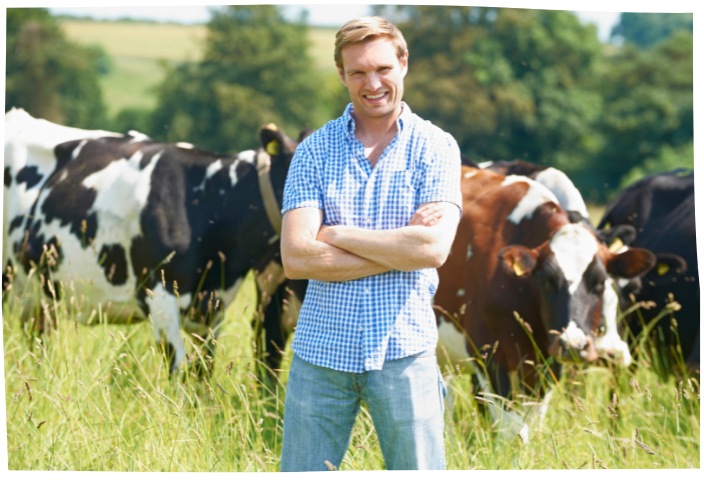Milk
The production of milk has an impact on the environment. With On the way to PlanetProof, dairy farmers are taking steps to make their production more sustainable and animal-friendly. They must (continue to) meet the strict and ambitious requirements each year.
Dairy farmers provide:
- much attention to health and welfare of cow and calf;
- compulsory outdoor grazing for cows and, from 2023, also for young stock;
- reduction of greenhouse gas emissions, for instance through green energy;
- further closure of the cycle, for example with own feed production;
- nature and landscape management on and around the farm.
Download factsheet

Attention to animal welfare and animal health
The quality label On the way to PlanetProof sets various requirements for the welfare and health of the animals. Dairy farmers must meet these criteria. The welfare and health of the animals is measured and monitored by independent organizations. The veterinarian also plays an important role in this.
The dairy farmer ensures, for example, that there is room for relaxation inside the barn; there is at least one lying area for each cow and cow brushes are present to take care of the skin. There are also brushes for the calves. In addition, the cows graze in the meadow for at least 120 days a year, 6 hours a day. Per hectare of land (about 2 soccer fields), a maximum of 10 cows are allowed.
The dairy farmers also have the claws of the animals inspected annually by a professional claw care specialist and treated where necessary. Furthermore, the milk of every cow is checked at least every 6 weeks. In addition, the dairy farmers, in close cooperation with the veterinarian, monitor the health and welfare of the animals using a tool: the Dutch ‘KoeKompas’.
KoeKompas
The dairy farmers affiliated with On the Way to PlanetProof take care of their cows and calves. The KoeKompas is an important guiding instrument. Hereby, the dairy farmer and a veterinarian examine the issues that are important for the welfare of the animals together. It concerns nutrition and water, housing, milking, work routines, rearing young stock, and animal health.
The veterinarian is a real coach for the farmer; together they draw up the points that need to be worked on. The results of this plan are critically discussed again within nine months so that steps are continually being taken for better animal welfare.

Reducing greenhouse gas emissions
To limit their impact on the climate, dairy farmers buy-in or generate their own green electricity. They also limit the emission of greenhouse gases by, for example, purchasing less artificial fertilizer and concentrated feed. Also, they grow as much feed as possible themselves. Greenhouse gas emission requirements also stimulate the use of raw materials with lower emissions. These include residual products from the potato and sugar beet industries.
Closing the agriculture loop
By having a minimum of 50% of the feed produced in-house, the participating companies are encouraged to further close the cycle. In addition, the quality label sets requirements for limiting the emission of nitrogen to the soil and nitrogen (ammonia) to the air. By using self-produced raw materials, such as manure and cattle feed, and purchasing raw materials efficiently and limited, the dairy farmer can close the cycle.
Wondering how farmers in the Netherlands apply this? Take a look at this video. Make sure you activate your subtitles.
Nature and landscape management
The farmers also take care of nature and landscape management in the meadows and around the farm. They do this, for example, by including more herb-rich grassland in their operations. This has several advantages:
- it can reduce the use of artificial fertilizer – and thus the emission of nitrogen;
- it stimulates biodiversity, both above and below ground;
- it is rich in minerals and trace elements, which benefit the health of the animals.
Is milk part of your diet and would you like to make a more conscious choice? Then choose milk in the supermarket with the quality label On the way to PlanetProof.


